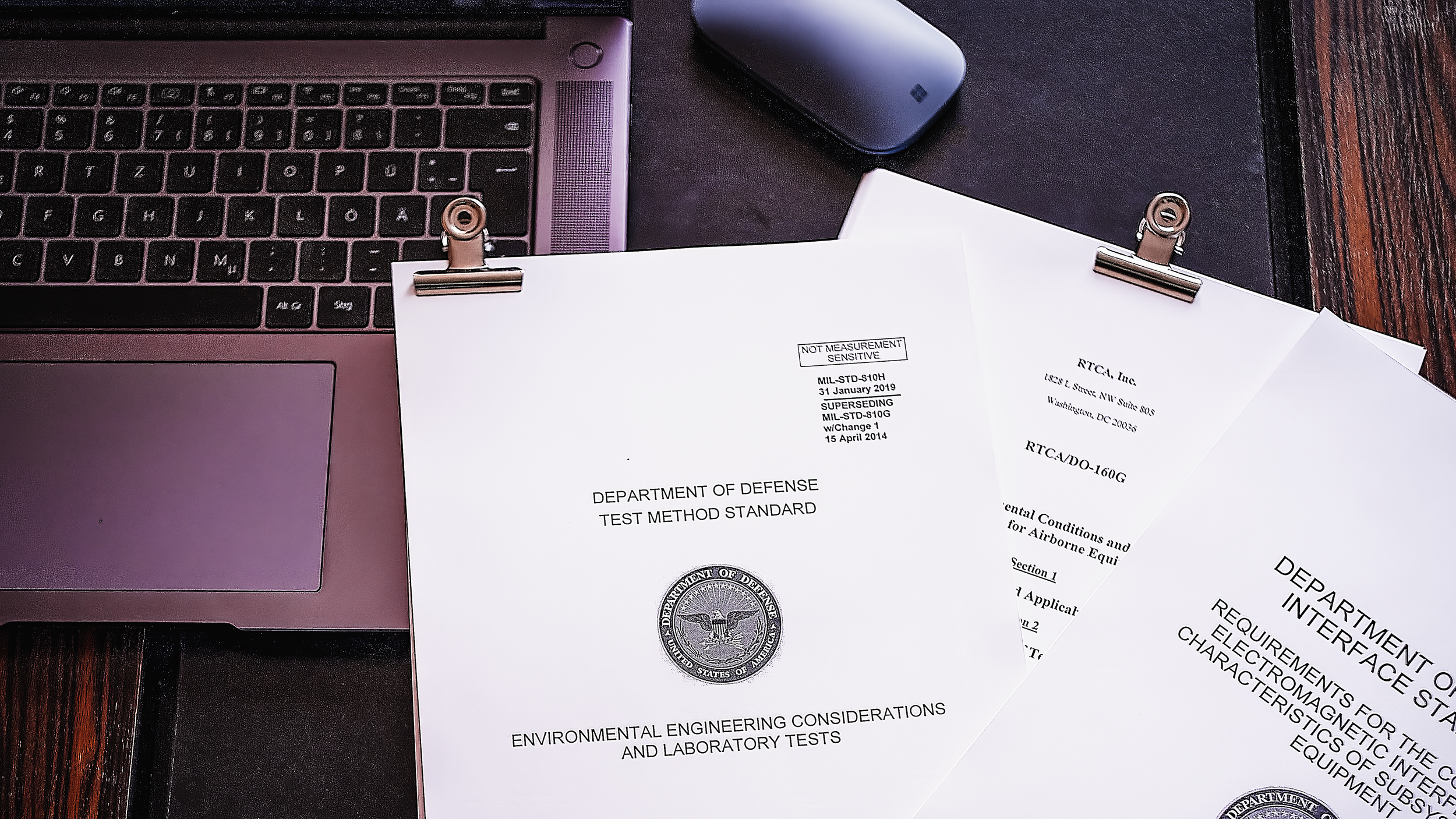
ENVIRONMENTAL TEST STANDARDS & PROCEDURES
At ALR we know the necessary Standards (MIL-STD810, MIL-STD461, RTCA-DO160…) to design & build rugged Systems. FIND below some useful facts on the most common standards & procedures.
Low Temperature Test performed on in one of our Climatic Chambers
Shock & Vibration Tests performed on a Vibration Table in an external Test Lab
Under the Registration Number MIL-STD 810, the US Department of Defense (DoD) in 1962 defined & released a Test Method Standard considering the Influences that environmental Stresses will have on Materiel throughout all Phases of its Service Life.
These Test Methods are - in partial or full, depending on the Materiel to be tested and its operational Purpose - the Standard for any Development of Material being used in the US Armed Forces.
Due to the Versatility of some of the Test Methods defined, it has become common Practice to utilize these Test Methods - in partial or full, depending on the Materiel to be tested and its operational Purpose - also for the Development of commercial Materiel.
This Standard was always intended to be a "Living Document" that will be updated as new Concepts, Technologies and Methodologies evolve. The actual Version is Revision H and was released in January 2019.
Although the the whole Set of Tests define way over 250 Methods & Procedures, the most common Test Procedures herein are the following:
Method 500.6 - Low Pressure (Altitude)
Method 501.7 - High Temperature
Method 502.7 - Low Temperature
Method 503.7 - Temperature Shock
Method 507.7 - Humidity
Method 509.7 - Salt Fog
Method 510.7 - Sand & Dust
Method 511.7 - Explosive Atmosphere
Method 512.6 - Immersion
Method 514.8 - Vibration
Method 516.8 - Shock
Large EMC Test Chamber (Image Courtesy of TÜV Rheinland GmbH)
Under the Registration Number MIL-STD 461, the US Department of Defense (DoD) in 1967 defined & released the Requirements for the Control of Electromagnetic Interference Characteristics of Subsystems and Equipment.
This standard establishes both an Interface and associated Verification Requirements for the Control of the Electromagnetic Interference (EMI) Emission & Susceptibility Characteristics of electronic, electrical, and electromechanical Equipment and Subsystems designed or procured for Use by Activities and Agencies of the DoD.
Due to the Versatility of some of the Test Methods defined, it has become common Practice to utilize these Test Methods - in partial or full, depending on the Materiel to be tested and its operational Purpose - also for the Development of commercial Materiel.
This Standard was always intended to be a "Living Document" that will be updated as new Concepts, Technologies and Methodologies evolve. The actual Version is Revision G and was released in December 2015.
Unlike MIL-STD810, there is no common Test Procedure to name here as all Procedures are highly depending on the Nature of the developed Materiel and its intended Place of Operation.
DO-160, Environmental Conditions and Test Procedures for Airborne Equipment is a Standard for the environmental Testing of Avionics Hardware. It is published by the Radio Technical Commission for Aeronautics (RTCA) and supersedes DO-138.
These Procedures have been referenced in Minimum Operational Performance Specifications (MOPS) for specific Equipment Designs, and is referenced in FAA Advisory Circulars as a Means of Environmental Qualification for TSO Authorization. In other Words: if an Equipment hasn’t passed DO-160 Qualification, it must not be installed on any commercial Aircraft!
Due to the Specialty of the Procedures defined, these Procedures mainly apply to commercial Aircraft Equipment. We say “mainly” because we have already seen Parts of these Test Procedures - mostly concerning Electricity Issues defined in Sections 16.0 through 26.0 - being specifically adapted & modified for Equipment being used onboard Naval & Army Vehicles…
As DO-160 includes both mechanical AND electrical Stress Tests, this Standard is often seen as a “Join of MIL-STD810 and MILSTD461”, but that’s not the Truth as DO-160 is way more demanding and much harder to pass!
The DO-160 document was first published in February 1975 to specify test conditions for the design of avionics electronic hardware in airborne systems. Since then the standard has undergone subsequent revisions up through Revision G.






